Probably the best feedback on a conference comes from the students who are experiencing it for the first or second time. So without further ado, here is their thoughts on the talks they attended! Enjoy!
Ritwika:
Topic: MALDI-TOF Mass Spectrometry Characterization of Synthetic Polymers
Presenter: Molly Payne, Tulane University
Molly Payne does not work on a project but rather the instrument. Her lab is given polymers and they work to find the monomeric structures, its stability and any abnormal reactions during the cleavage of bonds that make up the polymer. As a result, she presented three case studies instead of a single project. The first was using Azide end groups to functionalize monomers before MALDI. The idea was to attach azide groups to either end of the monomer using click chemistry and if it was indeed the monomer which was theorized, then the shift on the MALDI graph would be predictable. This is used as secondary proof of the repeat sequence along with another technique where the product is degraded with Hydrogen peroxide. The latter is to see if the peroxide reacts with the structure in the expected manner and if that is reflected in the MALDI graph, which would be another way to predict if the monomer is the correct one. Her second example was of polymers made of ring structure monomers, which when cleaved, opened up instead of maintaining the ring structure (Like Lactide). It acted even stranger under MALDI, as it seemed to reflect 2 monomers worth of mass instead of the one. It was later found that Lactide happens to have a lot of reactive oxygen sites that can be attacked to form odd numbered polymers instead. Her third case was the idea of using thiol coupling as a way to doublecheck the presence of thiol groups. Click chemistry is used in attaching these thiol groups to either side of the monomer much like her first case and if the expected mass changes are seen on the MALDI, the structure is confirmed. Molly Payne insisted that while it might seem like NMR does the same thing, it is not easy to do attach end groups to double check the compound as it is often drowned out. While the general GC mass spec might be a better choice than NMR, compounds with low disparity are much more accurately seen on the MALDI.
I thought this was the most interesting for two reasons: First, I learn best with examples or visual cues and this had both. I understand that most research cannot be made into examples, but perhaps instrumentation could be the one area that it can, and this presentation used it. Secondly, it was almost like she was a chemical detective. It was like a puzzle that her group had to solve each time and they had the one machine at their disposal. Additionally, after learning about MALDI during research and in class, I had a very narrow view of what it can do. I suppose it does just give back mass either way, but it was interesting to know how many ways the sample can be modified before it even goes into the machine.
—————————————————————————————————–
Maddie:
Talk Date: Friday, November 10, 2017
Presenter: Nicole Snyder
University: Davidson College
Title: Development of modular tools for studying carbohydrate-protein interactions
Summary: Dr. Nicole Snyder’s talk titled “Development of modular tools for studying carbohydrate-protein interactions,” was my favorite talk I attended at SERMACS because she was a strong speaker and gave an interesting talk in understandable terms. Dr. Snyder’s research lab at Davidson College focuses on understanding the synthesis of biologically relevant carbohydrate-based constructs and carbohydrate-based catalysts. Her research lab is predominantly composed of undergraduate students. I thought it was particularly interesting that her lab collaborates with another lab in Europe, and the two labs send students back and forth between the two countries.
—————————————————————————————————–
Jessica:
My favorite talk was the Fruit Chemistry Considerations for Cider Fomentation: Amino Acid Profiles and Hydrogen Sulfide Production by Amanda Stewart from Virginia Tech. It was interesting because I learned how complex cider production can be as opposed to other alcohol fermentation. In addition, I was able to easily understand what her research was about. She focused on how fruit nitrogen composition affects fermentation and flavor and wants to develop specific strategies for cider fermentation management. Before the development, she wanted to identify the origins of H2S in cider fermentation by yeast assimilable nitrogen (Yan). Her lab group found that yan from apple was lower than grapes but varied within different apples. Apples contained primarily amino acids with different methionine concentration and methionine could inhibit SRS (sulfate reduction sequence). The researchers looked at three different Yan levels (53, 153, 200 mg/L) and added different concentrations of methionine to see the levels of H2S. The key results were that after adding methionine in 53 mg/L of Yan, H2S decreased; in 153 mg/L of Yan, H2S levels were the highest; in 200 mg/L of Yan, H2S was the lowest. Thus, the lab wants to further research why 153 mg/L of yan had the highest H2S production.
—————————————————————————————————–
Kiana:
My favorite talk was a biological chemistry talk about the therapeutic potential of using FDA-approved small molecules to decrease the virulence of MRSA. Kyra Gillard’s research consisted of using FDA-approved anti-depressants, such as amoxapine, and other compounds to target the gene expression of B-lactamase. Her future directions include synthesizing more potent analogues that can be administered at relatively low concentrations. I was intrigued by her research because it shed light on the issue of antibiotic resistance; this global issue thoroughly affects mankind’s ability to treat harmful bacterial pathogens.
Topic: “Investigation of FDA-approved small molecules as modulators of virulence in Methicillin-Resistant Staphylococcus aureus (MRSA)”; Presenter: Kyra Gillard, High Point University
—————————————————————————————————–
Courtney:
My favorite talk from SERMACS was on Saturday morning in the Biological Chemistry session. Kyra Gillard presented her research in Dr. Blackledge’s lab at High Point University. Her research was centered around MRSA and using small molecules that are already approved by the FDA to act as modulators of virulence in resistant forms of MRSA. MRSA is highly antibiotic resistant, which is also a problem among other diseases. Quickly after new antibiotics are development, resistance begins to rear its head. Therefore, Gillard’s research about using modulators to aid in the effects of already existing antibiotics is extremely important. To be completely honest, I do not recall the small molecule that Gillard found was an excellent modulator of virulence in MRSA in conjunction with methicillin, but she did get positive results with a small molecule that is already FDA approved. Her research is far reaching because if modulators are found to aid other antibiotics, then ones that are already on the market will be revamped without having to constantly create new antibiotics. I really enjoyed this talk because Gillard presented her research very clearly without over explaining anything. I also really enjoyed the very practical and real-world application of her research.
—————————————————————————————————–
Malik:
Dr. Perahia’s Multi Scale Dynamics in Ion Containing Macromolecules, presentation centered on seeking understanding of motions of complex fluids via neutron spin NMR. Unique characteristics of complex fluids, specifically its functionality, is defined by its movement. In addition, Dr. Perahia’s elaborated on clustering dynamics of complex fluids. Furthermore the specific mechanical behavior of a given polymer can be ascertained if it undergoes shearing.
I found Dr. Perahia’s the most intriguing because it was my first real life introduction to applications of NMR outside molecular structure characterization. The majority of the vocabulary used was beyond my own knowledge but I found some of the questions Dr. Perahia’s aimed to explore to be of interest. For example, during a section discussing clustering dynamics an inquiry of how ions affect clustering arose. Although the practical application of addressing that question is not something I can fathom, it is worthwhile researching what conditions about ions can facilitate clustering mechanics. Understanding this can lead to ability to either induce these dynamics, stop them, or exercise control of polymer behavior.

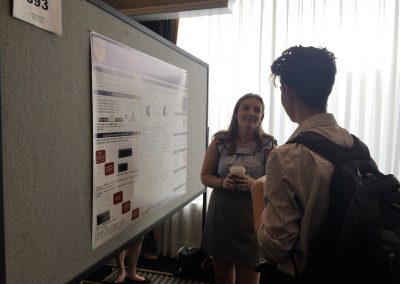

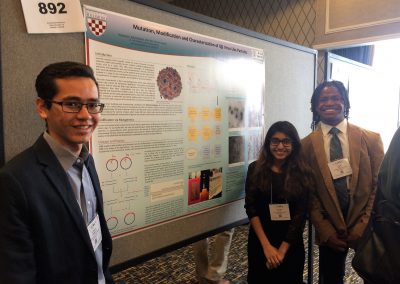
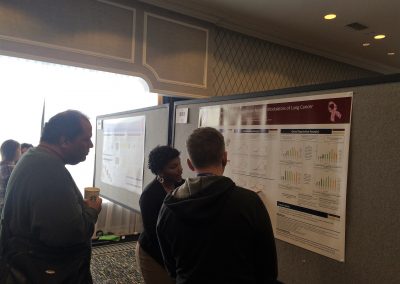
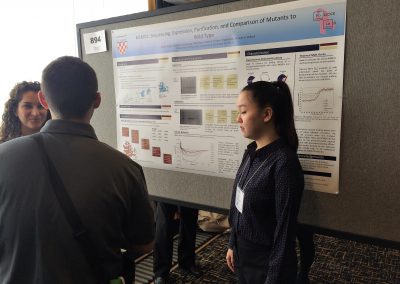

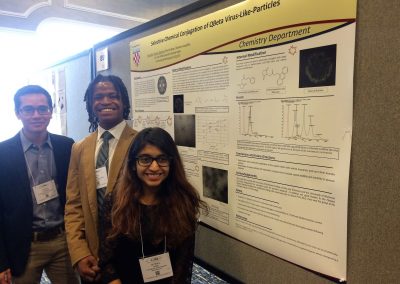
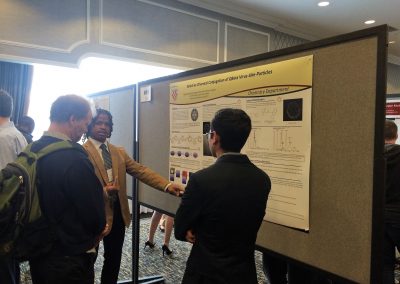

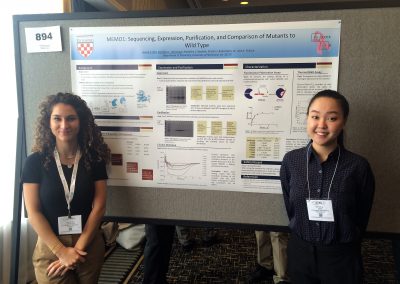
Recent Comments